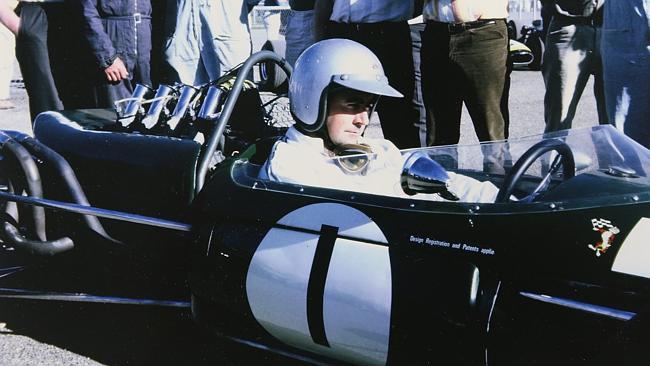Jack Brabham was a champion of Aussie ingenuity
JACK Brabham was a genuinely great Australian, and driving cars faster than most mortals is only part of the story.

EVERYONE’S a great Australian these days.
You only have to appear on a reality TV show, star in a movie (preferably outside Australia) or con shareholders for a while and suddenly you’re one. Jack Brabham was a genuinely great Australian, and driving cars faster than most mortals is only part of the story.
Leaving school at 15, Jack’s extraordinary engineering ability was a product of learning on the job and the technical college system. As soon as he turned 18 he joined the RAAF keen to be a pilot but so did everyone else; the air force made him a flight mechanic instead.
While John Arthur “Jack” Brabham learned to drive at 12, by today’s standards he was late getting into motorsport. His first race didn’t come till a speedway start on dirt when he was 22. Within two years he was a professional speedway driver. Most F1 drivers now have done 300 races by the time they first get onto the grid.
What his peers noticed then earned him the title Black Jack. A great bloke out of the car, once he got behind the wheel, winning was all that mattered. The difference between the world’s best racers and all the others who try is that the very small number who shine are artists. No amount of coaching or money will make even a talented driver a Schumacher, a Senna, a Fangio or a Brabham. Maybe this is one of the reasons in the pre and postwar history of Grand Prix racing, Europeans dominated the sport. Brabham was only the second Commonwealth driver to win an F1 championship.
GALLERY: Jack Brabham, 1926-2014
And it was tougher then. As Jackie Stewart says, at the time he and Brabham were driving, an F1 driver who raced for five years had a two-thirds chance of being killed in a crash. In 1959 in Sebring in the final round of the world championship, Brabham ran out of fuel and pushed his Cooper Climax 300m to take the title. But it was not just physically tough. When Brabham was competing, motor racing was a gentlemen’s game, where the sons of very wealthy fathers, could afford to buy the best cars or buy their way into the best teams.
In 1952 the Australian air ace Tony Gaze became the first Australian to race in F1. Three years later Gaze started our first international motor racing team, the Kangaroo Stable, which included the young Brabham. The other major influence on Brabham’s success was engineer and race car designer Ron Tauranac. Brabham won his first two world championships driving a Cooper. Brabham and Tauranac started their own race car company and in 1966, together with Australian engine maker Repco and a car designed by Tauranac, Brabham became the first F1 driver ever to win in a car bearing his own name.
Till his death, the 1966 win was one of his proudest achievements, particularly “doing it with an engine made in Australia”. The following year he proved it wasn’t just the driver when a Brabham driven by Kiwi Denny Hulme, won both the driver’s and constructor’s world championship.
Brabham retired from F1 in 1970. “I felt very sad,” he said in a 1999 Motor Sport interview. “I didn’t feel I was giving up racing because I couldn’t do the job. I felt I was just as competitive then as at any other time, and I really should have won the championship in 1970.”
Of course, Brabham didn’t give up racing. In fact he was still competing in 2004 despite a long list of ailments.
Brabham was a great Australian. He shone a light on Australian technology at a time when we were best known for sheep and wheat. When he retired from F1, no American car had won a championship. Sixteen European cars and six English cars had. And a boy from Hurstville with the help of a couple of Australian mates took two of the most prized and competitive championships on earth.



